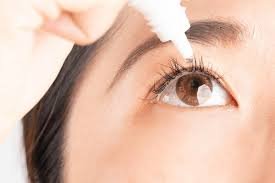OTC Artificial Tears Market : Key Drivers, Regional Insights & Forecast to 2033
The global OTC (Over-the-Counter) Artificial Tears Market is experiencing significant growth, expected to reach US$ 7.22 billion by 2033, up from US$ 4.70 billion in 2024. The market is projected to grow at a CAGR of 4.88% from 2025 to 2033.

Depth Analysis & On-Page SEO Optimization for Global OTC Artificial Tears Market Trends & Summary
Introduction
The global OTC (Over-the-Counter) Artificial Tears Market is experiencing significant growth, expected to reach US$ 7.22 billion by 2033, up from US$ 4.70 billion in 2024. The market is projected to grow at a CAGR of 4.88% from 2025 to 2033. This growth is largely driven by the rise in the prevalence of eye conditions such as dry eye syndrome, allergic conjunctivitis, and digital eye strain, along with an aging population and environmental factors that contribute to eye discomfort.
1. Overview of the OTC Artificial Tears Market
Artificial tears, often referred to as lubricant eye drops, are designed to mimic the natural tears in the eyes and provide relief from dryness and irritation caused by insufficient tear production. These products are commonly used for conditions such as dry eye syndrome, allergies, and infections, and have become essential for contact lens users.
Key Market Segments:
- Product Types: Solution, Ointment, Emulsion, Gel, Spray Solution, Suspensions.
- Applications: Dry Eye Syndrome, Allergies, Infections, UV and Blue Light Protection, Contact Lens Moisture Retention.
- Distribution Channels: Drugstores & Supermarkets, Online Pharmacies, Retail Pharmacies, Others.
2. Key Growth Drivers
a) Increase in Elderly Population
The elderly are particularly susceptible to eye conditions, including dry eye, glaucoma, and cataracts, which leads to an increase in the demand for OTC artificial tears. According to the United Nations, over 703 million people aged 65 and above were recorded in 2019. With the aging population, dry eye syndrome is increasingly common, particularly among the elderly, and this fuels the demand for these products.
b) Rise in Dry Eye Syndrome and Allergies
The increasing diagnosis of dry eye syndrome and allergic conjunctivitis is a major driver for the OTC artificial tears market. The American Academy of Ophthalmology (AAO) notes that nearly 1.68 million men and 3.2 million women were diagnosed with dry eye syndrome in 2019. Environmental allergens, pollution, and digital eye strain are contributing to the rise in these conditions.
c) Air Pollution and Environmental Impact
Environmental factors like air pollution, dry weather, and excessive screen time have worsened eye irritation, leading to an increase in the use of artificial tears. Pollutants such as dust, smoke, and automobile emissions can lead to symptoms like dryness, redness, and irritation in the eyes, pushing consumers to seek relief through artificial tears.
New Publish Reports
3. Market Challenges
a) Side Effects and Preservatives
Certain preservatives added to artificial tear solutions to extend shelf life can cause irritation, especially with prolonged use. This has resulted in growing demand for preservative-free artificial tears. However, manufacturing preservative-free formulations is more expensive and complex due to packaging requirements and shorter product turnover times.
b) Competition from Prescription Alternatives
Despite the availability of OTC artificial tears, prescription treatments like Restasis for chronic dry eye may limit the market for over-the-counter alternatives. These treatments often provide longer-term solutions, whereas artificial tears are mainly used for temporary relief.
4. Market Trends and Innovations
a) Solution-Based Products
Solution-based artificial tears are leading the market due to their simplicity and ease of use. They provide immediate relief for eye discomfort, making them popular among users with sensitive eyes or those who wear contact lenses. The liquid form allows for quick application, and it is ideal for addressing symptoms of dry eye syndrome and allergies.
b) Dry Eye Syndrome: A Key Market Driver
As dry eye syndrome continues to grow due to factors like aging and increased screen time, the demand for artificial tears, especially in the form of gels and ointments, is expected to rise significantly. OTC artificial tears have become one of the most accessible treatments for individuals suffering from this condition.
5. Regional Insights
United States
The United States dominates the OTC artificial tears market due to the high prevalence of eye disorders, such as dry eye disease, and digital eye strain. The aging population, coupled with increasing consumer awareness about eye health, contributes to market growth. Distribution through drugstores, pharmacies, and online platforms ensures easy access to these products.
Europe
The European market, particularly in countries like the United Kingdom and Germany, is witnessing steady growth due to the aging population and rising incidences of dry eye syndrome. Consumer preference for preservative-free and contact lens-compatible formulations is driving product innovation.
Asia Pacific
In the Asia Pacific region, particularly in countries like India, China, and Japan, the rising levels of air pollution and the adoption of digital devices have significantly increased eye discomfort, thus boosting demand for artificial tears. The market in these regions is growing rapidly due to the large number of eye health issues related to environmental factors and the increasing awareness of OTC eye care solutions.
6. Competitive Landscape
The OTC artificial tears market is highly competitive, with several established players dominating the industry. Key companies include:
- AbbVie Inc.
- Akorn Inc.
- Alcon
- Bausch Health Companies Inc.
- Johnson & Johnson
- Nicox S.A.
- Novartis AG
- Santen Pharmaceutical Co. Ltd.
- Sun Pharmaceutical Industries Ltd.
What's Your Reaction?















.jpg)
.jpg)

